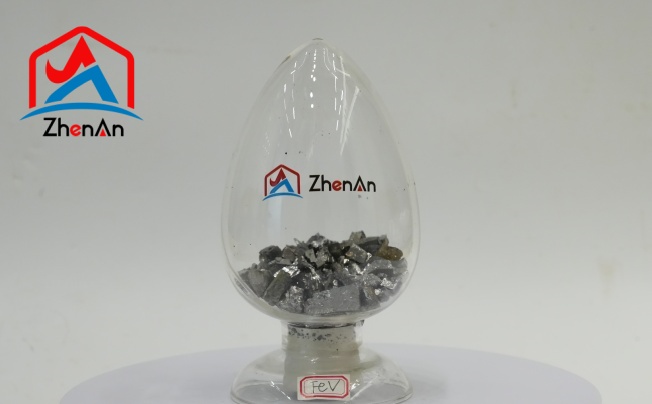BY  GENN
GENN
2024/07
Blog
Is Ferrotitanium Magnetic Safe?
Unraveling the Mysteries of Magnetic Fields
Magnetic fields are invisible forces that exert influence over objects within their proximity. These fields are created by moving electric charges, such as the electrons orbiting the nucleus of an atom.
When these charged particles move, they generate a magnetic field that flows in a specific direction. In the case of ferromagnetic materials like ferrotitanium, the alignment of magnetic domains within the material allows it to exhibit magnetism.
Magnets come in various shapes and sizes, each with unique properties and strengths. The most common types of magnets include permanent, temporary, electromagnets, and superconducting magnets.
Permanent magnets maintain their magnetic properties without external influence and are often made from materials like iron, nickel, and cobalt. Temporary magnets only exhibit magnetism when exposed to a magnetic field but lose it once removed.
Electromagnets are created by passing an electric current through a coil of wire wrapped around a core material like iron. Superconducting magnets are mighty and can produce intense magnetic fields due to the absence of electrical resistance in superconducting materials.
Different Types of Magnets and Their Strengths
Strength in Size
The strength of a magnet is measured in units called Gauss or Tesla, depending on the scale being used. Permanent magnets vary in their magnetic strength based on factors like material composition and size.
For example, neodymium magnets are known for their exceptional strength relative to their size due to the high concentration of rare-earth elements within them. On the other hand, ceramic (ferrite) magnets are more affordable but have lower magnetic strength compared to their neodymium counterparts.
Magnetizing Matters
The intensity or coercivity of a magnet refers to its ability to resist demagnetization or loss of magnetism over time or when subjected to external influences. Higher coercivity values indicate greater resistance to demagnetization—a crucial factor when considering long-term use or exposure to varying conditions for ferromagnetic materials like ferrotitanium.
Ferrotitanium Composition
The Composition Breakdown of Ferrotitanium Alloy
Ferrotitanium is an alloy composed primarily of iron (Fe) and titanium (Ti), with trace amounts of other elements such as carbon, silicon, and aluminum. The exact composition can vary depending on the desired properties for specific applications.
Typically, ferrotitanium contains around 70-80% iron and 20-30% titanium. The alloy is produced by melting together the raw materials in a controlled environment to ensure a homogeneous mixture.
The addition of titanium to iron imparts several beneficial characteristics to the ferrotitanium alloy. Titanium is known for its high strength-to-weight ratio, corrosion resistance, and ability to withstand high temperatures.
When combined with iron, titanium enhances the overall mechanical properties of the alloy, making it suitable for a wide range of industrial applications. The composition of ferrotitanium can be adjusted to achieve different levels of hardness, tensile strength, and magnetic properties based on the intended use.
How Titanium and Iron Interact to Create Magnetism
The magnetic properties of ferrotitanium stem from the interaction between iron and titanium within the alloy structure. Iron is inherently ferromagnetic, meaning it can be magnetized in the presence of an external magnetic field and retains some magnetization even after the field is removed. Titanium itself is not inherently magnetic but can influence the magnetic behavior of iron when combined in an alloy.
In ferrotitanium alloys, titanium acts as a stabilizing element that helps control the formation of specific microstructures responsible for magnetism. The presence of titanium atoms in the crystal lattice structure of iron alters its magnetic domains’ alignment, resulting in enhanced magnetic properties compared to pure iron alone.
This interaction between titanium and iron creates a material that exhibits both mechanical strength from titanium and magnetic responsiveness from iron. The degree of magnetism exhibited by ferrotitanium can be tailored by adjusting the ratio of iron to titanium in the alloy composition.
Higher concentrations of iron typically result in stronger magnetic properties, while increased levels of titanium may reduce overall magnetization but enhance other desirable characteristics like corrosion resistance or heat tolerance.
Is Ferrotitanium Magnetic Safe?
Evaluation of the Safety Aspects of Ferrotitanium’s Magnetism
Ferrotitanium, a versatile alloy of iron and titanium, possesses magnetic properties due to the presence of iron in its composition. The magnetism in ferrotitanium can vary depending on the ratio of iron to titanium in the alloy, with higher iron content generally leading to stronger magnetic forces.
When evaluating the safety aspects of ferrotitanium’s magnetism, it is crucial to consider how this property can impact its handling and use in various applications. While ferrotitanium is not inherently dangerous because of its magnetic nature, understanding and managing its magnetism is essential to prevent any potential risks.
Handling Precautions for Ferrotitanium Products
When working with ferrotitanium products, proper handling precautions should be taken to ensure safety and prevent accidents. Due to its magnetic properties, ferrotitanium can exhibit strong attraction towards other metal objects.
It is important for individuals handling ferrotitanium materials to use non-magnetic tools and equipment to minimize the risk of unintended attraction or interference. Additionally, storing ferrotitanium away from sensitive electronic devices or medical equipment that could be affected by its magnetic field is advisable.
Impact on Electronic Devices and Medical Equipment
The magnetic properties of ferrotitanium can potentially have an impact on nearby electronic devices and medical equipment that are sensitive to magnetic fields. Strong magnets can interfere with the functioning of electronic devices such as smartphones, computers, or pacemakers by disrupting their internal components. Therefore, it is recommended to keep a safe distance between ferrotitanium products and these devices to avoid any unwanted effects.
Similarly, medical equipment that relies on precise electromagnetic signals may experience disturbances when exposed to strong magnetic fields generated by ferrotitanium alloys. Healthcare facilities should take precautions when using or storing ferrotitanium materials in proximity to sensitive medical equipment.
Applications of Ferrotitanium in Industry
Ferrotitanium, a potent alloy of iron and titanium, finds widespread applications across various industrial sectors due to its unique properties. One significant industry that extensively utilizes ferrotitanium is the aerospace sector.
The lightweight yet durable nature of ferrotitanium makes it an ideal material for aerospace components where the strength-to-weight ratio is crucial. Moreover, its resistance to corrosion adds to its appeal in aerospace applications where exposure to harsh environmental conditions is common.
Aerospace industry applications
In the aerospace industry, ferrotitanium is utilized in the manufacturing of aircraft structures, engines, and landing gear components. Its high strength and heat resistance properties make it valuable for critical parts that require reliability under extreme conditions.
Ferrotitanium’s ability to withstand high temperatures without losing structural integrity makes it an essential material for components exposed to friction and heat during flights. Additionally, its magnetic properties can be harnessed in certain electronic systems within aircraft.
Automotive industry applications
The automotive sector also benefits from the use of ferrotitanium in various applications. One notable application is in the production of exhaust systems for vehicles. Ferrotitanium’s corrosion resistance and durability make it an ideal material for exhaust pipes that are subjected to high temperatures and harsh chemicals emitted during combustion processes.
Additionally, its magnetic properties can be advantageous in sensor systems used for vehicle diagnostics and performance monitoring. As automotive manufacturers strive for lighter yet robust materials to enhance fuel efficiency and performance, ferrotitanium continues to play a significant role in advancing automotive technology.












